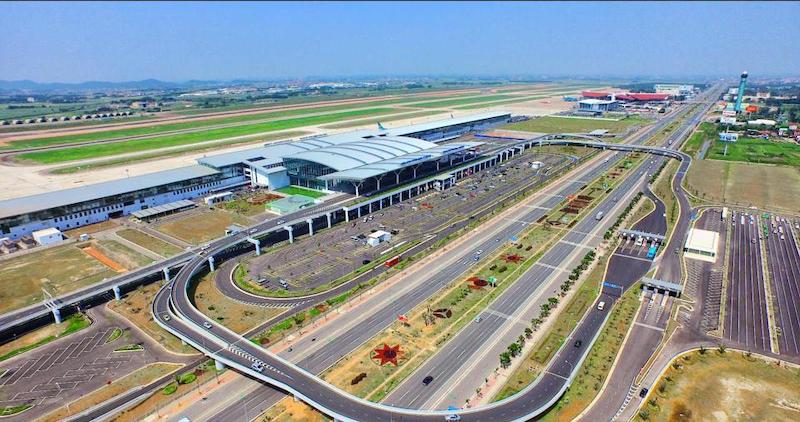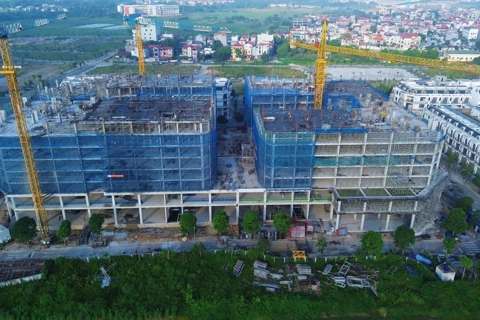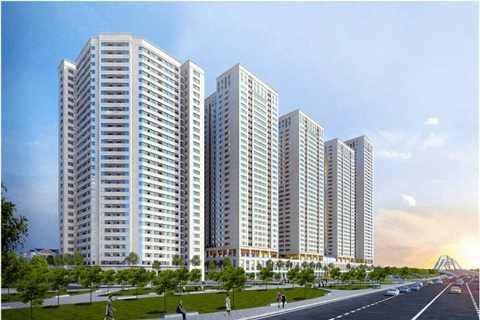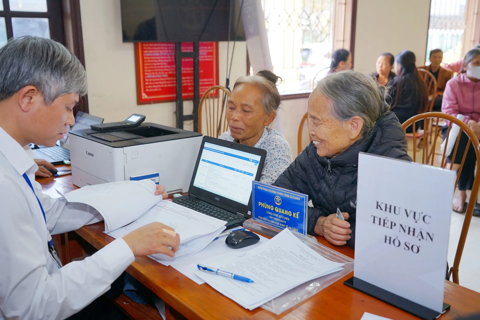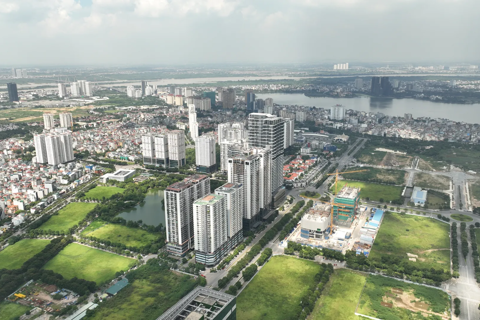Hanoi considers another int'l airport
The city continues to improve planning quality, implement key planned works and programs, and refine relevant mechanisms and policies.
Hanoi’s leaders plan to build another airport for foreign visitors in the capital city's southern region while upgrading Noi Bai International Airport.
| Noi Bai International Airport is estimated to serve 100 million passengers by 2050. Photo: ACV |
This is a key content in the municipal authorities' proposal sent to the Ministry of Transport recently that aims to perfect its transport infrastructure and synchronize with the capital city's master planning.
If the proposal is approved, it will be the second international airport, which is expected to be located in Thuong Tin, a suburban district about 20km from Hanoi's center. The new airport project will relieve the pressure on the current Noi Bai International Airport.
This project has many advantages, including the short distance and the travel time between Thuong Tin and Hanoi’s downtown, convenient road connection between this site and Hanoi’s metropolitan area, and easy access to the location by road, waterway, and railway, according to the city.
The clearance of the 1,300-ha airport construction site (similar to the size of Noi Bai International Airport with a capacity of 50 million passengers per year) is expected to be less troublesome than other public works as the area is mainly farmland.
The airport would also contemplate supporting surrounding urban areas, including Phu Xuyen satellite town, industrial zones, multimodal transportation, warehousing, and logistics systems.
According to Nguyen Bach Tung, an aviation expert, many cities in the world with populations of 10-15 million have built two international airports, so that Hanoi will need another one in the next few years.
"An airport in the southern part of the capital city will benefit surrounding localities like Ninh Binh Province, an emerging tourist magnet," he added.
The new airport project is one of the solutions raised by the Vice Chairman of the Hanoi People’s Committee, Duong Duc Tuan, at the 2022 national urban conference to solve shortcomings in planning, construction, management, urban embellishment, and development.
The conference aimed to seek opinions from stakeholders on how to effectively roll out action plans to achieve the goals of planning, construction, management, and sustainable development of Vietnamese urban areas until 2030, vision to 2045.
Tuan said Hanoi had defined its role as the center and driving force for the growth and development of the Red River Delta, the northern key economic region, and the whole country.
However, the speed of urbanization has not yet reached the target, while transport infrastructure is inadequate. He added that the city is still struggling to control population growth in the inner city.
The work of planning, planning management, land management, construction, urban development, and order is still insufficient.
Another reason is poor coordination between branches and management, administration, and organizational levels, Tuan said.
According to the municipal People’s Committee leader, the above limitations are due to the incomplete legal system and inadequate regulations and standards. Some preferential mechanisms and policies for investment have not brought the desired results.
Therefore, the city has identified major tasks and proposed a series of solutions, including close coordination with the Ministry of Construction and other ministries and sectors to urgently implement the tasks set out in Resolution No. 148 on the action program to realize the Politburo Resolution on the construction, management and sustainable development of Vietnamese urban areas until 2030, vision to 2045.
The city continues to improve the quality of planning, accelerate planned key works and programs, and refine mechanisms, policies, and laws on planning, construction, investment, land, and housing to create a sustainable legal framework to promote development, according to Tuan.
In addition, Hanoi will ensure connectivity with surrounding provinces and cities to form a driving force for regional economic development.
Another focus is the construction of Ring Road No. 4, running through the capital region, which will help Hanoi and its neighboring cities and provinces address existing transportation and planning management shortcomings and create infrastructure development breakthroughs. It is expected to bolster local connectivity between Hanoi and the northern provinces in the capital area.
After 15 years into the expansion of its administrative boundary, Tuan underlined that the mobilization of diverse social resources to invest in urban development had created a facelift for the capital.
Vice Chairman of Ho Chi Minh City People's Committee, Bui Xuan Cuong, mentioned limitations that need to be addressed in urban development, including traffic jams, flooding, and inadequacies in planning work.
Emphasizing Ho Chi Minh City's goal of becoming a world-class city, a center of economy, finance, trade, science-technology, and culture in Southeast Asia, Cuong proposed some tasks and solutions, including acting as a focal point and coordinating with localities in the region to implement transportation infrastructure projects connecting the region.

